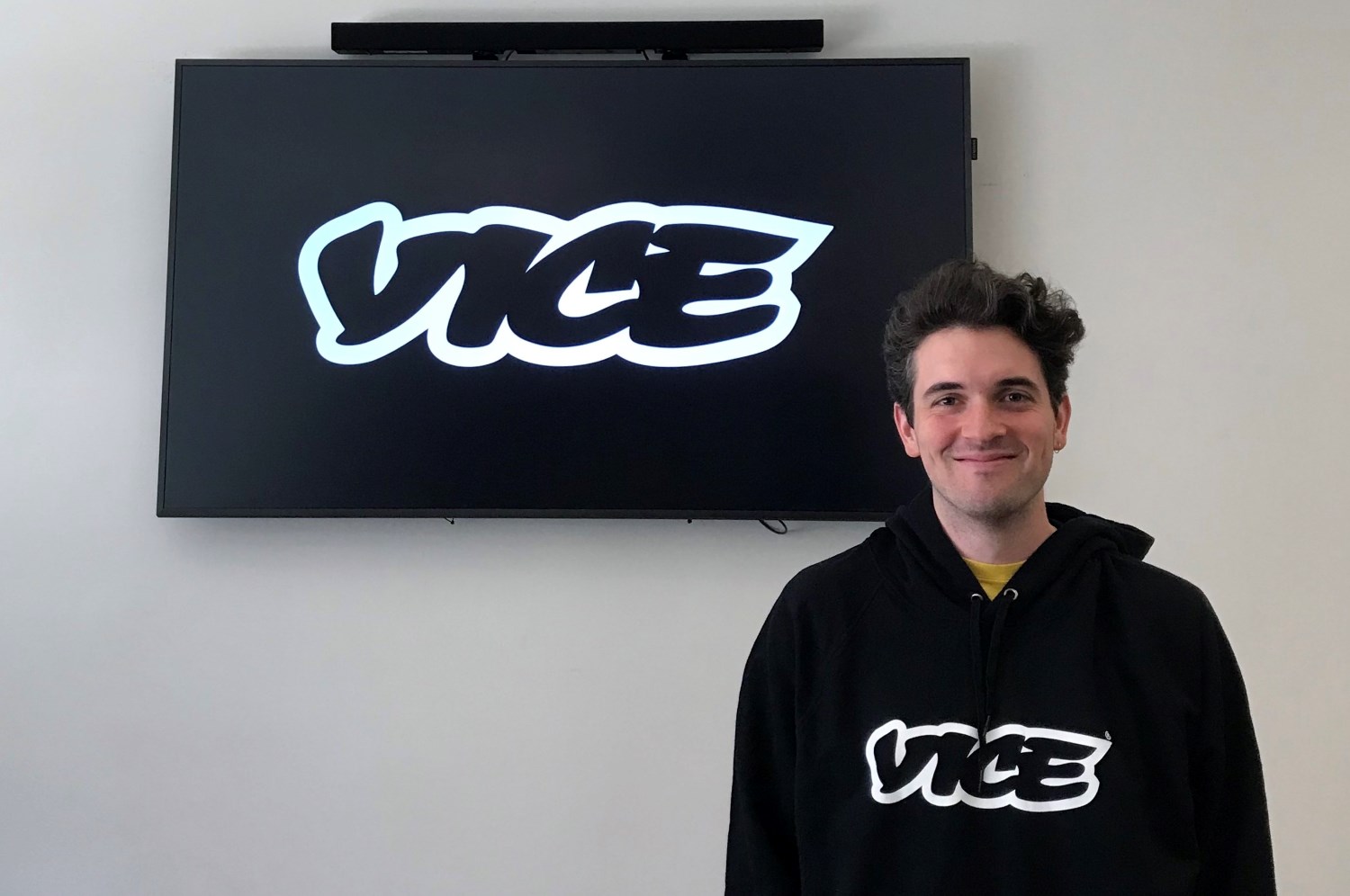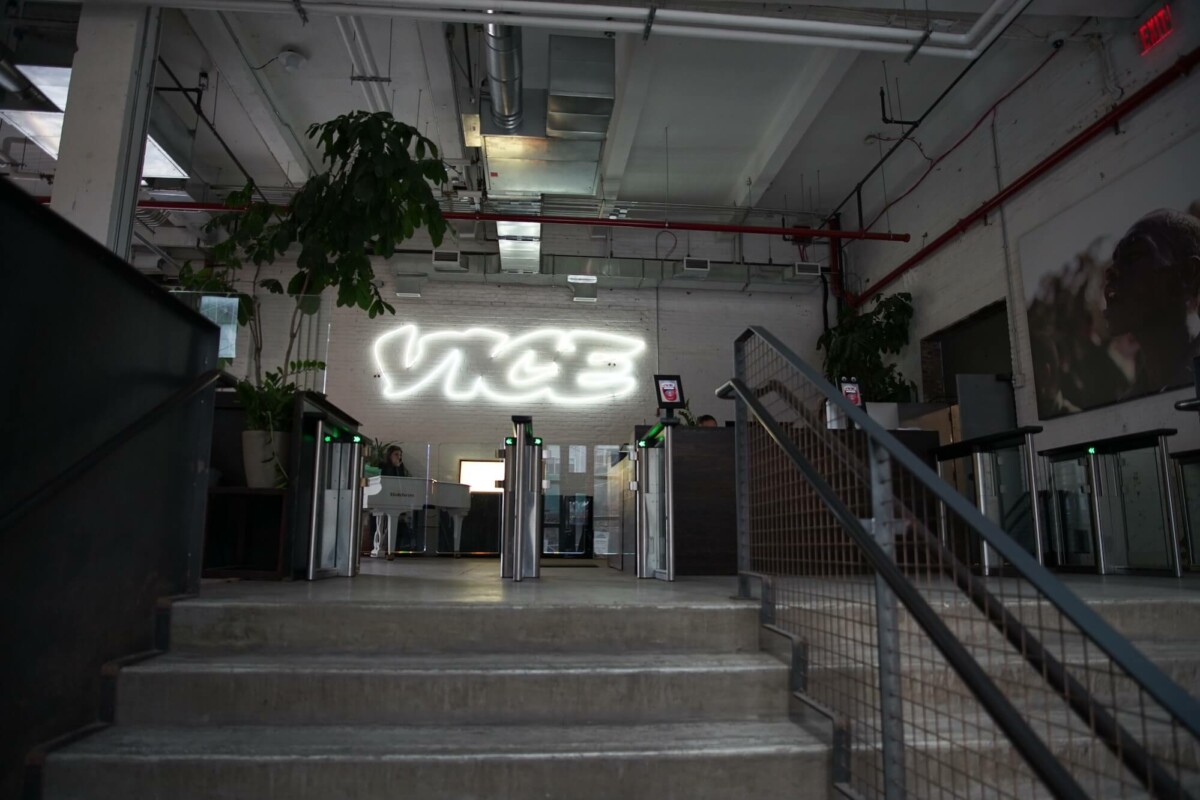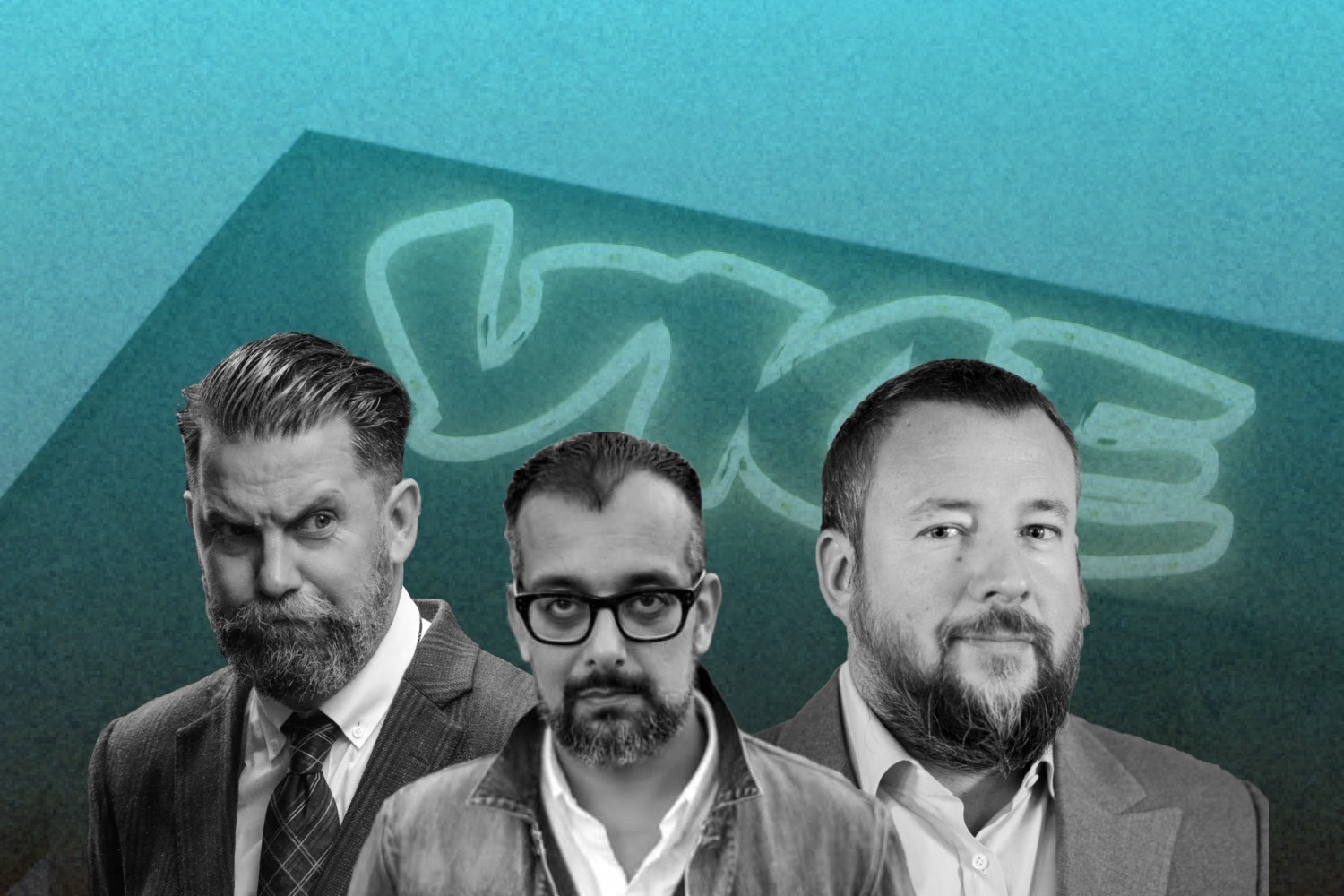The Unraveling of Vice Media: How a Media Giant Went from Boom to Bust
Reimagining how current affairs are conveyed to the millennial generation, Vice Media has left an indelible mark as one of the most accomplished and controversial media brands in the past quarter-century.
Vice clearly stands apart when compared to other media outlets. In particular, it has an in-your-face ethos and is sardonic, edgy, free-spirited, and provocative. It is therefore extremely unusual. But at the same time, it’s extremely original, genuine, and unorthodox.
Transforming from a local counterculture magazine into a $5.7 billion multi-platform global media enterprise in less time than much of its current audience has been alive, Vice has experienced a meteoric rise. However, the golden era has passed for this media behemoth, and its unexpected and rapid downfall has been making headlines in recent months, following the decline of BuzzFeed.
The most asked question these days is what happened to the media giant? The answer varies, but first of all, let’s look at Vice Media business model.
Vice Media – The Unusual Leap in the Media Arena
The Voice of Montreal, a free monthly culture magazine, was the original name of Vice when it was founded in 1994 by Shane Smith and Suroosh Alvi in Montreal, Quebec, Canada. They used to publish a publication called “Voice of Montreal,” which covered heated topics including drugs and alcohol. They ultimately shifted their name to Vice, since they wanted to grow beyond Montreal.
Later, Vice Media relocated to New York City, where it is now headquartered, thanks to venture capital backing. They quickly expanded into digital media, establishing Vice.com and making contentious video documentaries. They won praise from critics for covering events like the turmoil in Ukraine and the fight against ISIS firsthand.
Their most popular content consistently revolved around subjects like drugs and sexuality, topics often overlooked by mainstream news outlets. One notable series, “Hamilton’s Pharmacopia,” featured a Vice news reporter traveling the world to explore exotic psychoactive substances. These videos amassed millions of viewers, primarily among young males. However, translating this viewer engagement into a profitable business presented a formidable obstacle.
Vice’s strategy involved offering a substantial portion of its content for free on YouTube, where it found success. The main Vice YouTube channel garnered over one million daily views, solidifying its presence in the digital media landscape.
However, Vice Media faced substantial operational costs. With a workforce exceeding 3,000 employees worldwide and significant expenses related to sending reporters to remote and often dangerous locations, YouTube revenue alone couldn’t sustain the company. The direct income from YouTube, while significant, was merely a fraction of their overall expenses.
Rather than relying on YouTube as a primary profit generator, Vice employed it strategically to enhance their brand visibility. They recognized that YouTube could serve as a platform to pave the way for more lucrative opportunities, such as brand partnerships and television licensing deals.
Traditional cable television is more profitable per viewer than ad-supported platforms like YouTube. Cable subscriptions in the US cost around $83 per month, while YouTube ad revenue is minimal, even for frequent users.
However, many young people prefer free content on platforms like YouTube over expensive cable TV, leading to a decline in cable subscribers from 100 million in 2014 to 65 million.
Vice Media aimed to reverse this trend by partnering with cable TV distributors. In 2012, Vice signed a deal with HBO, creating a news series similar to their free content. This partnership marked a shift toward profitability for Vice, as it brought in substantial revenue and offered cable TV a way to appeal to a younger audience.

In 2015, Vice made a significant move into the traditional cable bundle by announcing a joint venture with A&E Networks, a broadcasting company partially owned by Disney. Together, they created an exclusive television series called “Viceland.” Cable networks and HBO paid Vice directly for the right to air Viceland. Additionally, Vice found another revenue stream through native advertising, where large advertisers paid Vice to produce television shows that either directly or indirectly promoted their products. For example, they created a show called “Beerland,” a documentary about craft beer sponsored by Anheuser-Busch.
This period saw Vice enjoying apparent success, leading to substantial investments pouring in. They raised a total of $1.7 billion from investors, including major players like Disney, 20th Century Fox, and George Soros’s family office. Vice was widely seen as a disruptor at the forefront of the digital age by both investors and media industry executives.
Vice wasn’t always as popular and prosperous as it is today. Vice was renowned for its free-flowing ideas, adaptability, and rapid and entrepreneurial approach to business concepts in addition to its culture of hard work. However, as Vice flourished, issues also began to appear.
Low Salaries and High Spirits – A Workplace Paradox
Under CEO Shane Smith’s leadership, Vice Media developed a culture known for a lot of drug use, especially among top executives. Many young and trendy employees joined the company right after college because Vice had a reputation for being rebellious.
The company’s location in Brooklyn, New York, added to the fun atmosphere, but the partying, along with excessive behavior from senior executives, began to make employees unhappy.
Junior employees at Vice were often given a lot of work and paid relatively little. Some reports even said they were hired at low salaries and had to work very long hours. While the exact details of the “22 rule” might have been exaggerated, it wasn’t too different from what many of these employees experienced.
Numerous complaints were made over the low pay and the showy behavior of the executives, who were observed spending more on booze and drugs at company-sponsored parties in one night than some employees made in a month.
Vice’s CEO Shane Smith became a billionaire despite the company’s financial difficulties and accusations of employee hardship, in part because of Vice’s high valuation in investment rounds. He was able to buy a $23 million property in Santa Monica in 2015 thanks to his wealth. For the unpaid employees, these extravagant displays of riches by upper management were disheartening.
The underpayment of Vice employees didn’t happen on purpose; it was a consequence of Vice’s struggling business model. To secure licensing deals with HBO and A&E, Vice had to produce a lot more content for cable TV. This shift meant they moved away from their previous focus on high-quality documentaries. Instead, they started making lower-quality content like reaction videos, which replaced their earlier, more controversial and thought-provoking work.

Furthermore, Vice changed the tone of its content to match its brand sponsors, taking on a more politically “woke” stance. For example, they published articles like “all masculinity is toxic.” This shift in content and stance ended up distancing a significant part of their core audience—young adult males with more politically conservative beliefs.
These problems led to a drop in Vice’s popularity in 2018, with Viceland averaging only 100,000 viewers per night. The channel’s attempt to entice younger viewers to subscribe to cable services failed, as Viceland viewers were, on average, 42 years old.
To add to its troubles, HBO ended its partnership with Vice in 2019, eliminating a crucial revenue source. When The New York Times and other media sources exposed widespread sexual harassment and a toxic workplace culture at Vice, things got much worse. As a result, brand sponsors broke relations with the business, seriously harming its reputation.
After struggling with financial challenges and a failure to keep pace with the changing media landscape over the years, the once-pioneering media company that shaped the millennial generation’s media consumption declared bankruptcy in May 2023.
From a $5.7 Billion to a $350M at Sale – Media Giant Jumps off the Cliff
Vice got a lot of money from investors, which made its bosses lazy and careless. They spent a lot on making new stuff, even when not many people wanted it, and that cost them a lot of money.
But in 2019, Vice was almost out of money, and Disney said they lost $353 million on their $400 million investment. This means Disney thought Vice was a big failure and not worth much.
To try to make things better, one of Vice’s founders, Shane Smith, stepped down from the position. Nancy Dubuque, who used to be in charge of A&E Entertainment, took his place.
One of her first moves was to borrow $250 million, but she also had to let go of about 10 percent of the company’s employees to stop the company from spending too much money. While this borrowing helped for a while, it meant Vice had to pay tens of millions in interest every year, even though they were still losing money.
Even though the leader changed, Vice still had problems with the quality of its content, and not enough people were watching or giving them money. In the summer of 2021, Vice tried to become a public company by teaming up with a SPAC (Special Purpose Acquisition Company), but their big losses scared away even the SPAC investors.
Federal Reserve interest rate increases in 2022 caused market volatility and advertisers to reduce their spending. This significantly decreased Vice’s brand sponsorship revenue and made obtaining new funding practically impossible.
As of May 2023, Vice Media had exhausted its financial resources and filed for Chapter 11 bankruptcy protection.
Despite several offers for the financially troubled media company, a judge in the Southern District of New York ruled in June that the best solution was proposed by the group of lenders, which included Fortress Investment Group and Monroe Capital.
The deal is in the form of a credit bid, which allows lenders to use debt they’re owed toward the purchase of a company’s assets out of bankruptcy. The deal will let Vice keep operating with substantially less debt after exiting court protection.
Fortress Investment Group raised its offer to $350 million, up from the initial agreement of approximately $225 million, after Vice filed for Chapter 11 bankruptcy in May. This revised offer was disclosed in a court filing.
Vice’s bankruptcy filing marked the conclusion of a significant decline for a company that had once been valued at $5.7 billion. Among the largest secured creditors of the media company, Fortress Credit Corp. held claims totaling approximately $475 million, as indicated in Vice’s bankruptcy petition.
The rapid decline of Vice highlights the tough road ahead for digital media companies. They are currently contending with challenges as advertisers trim their budgets amid economic uncertainty, while also directing their marketing efforts towards tech giants like Facebook, Google, and TikTok.
Rough Road Ahead for the Digital Media Arena

Vice Media’s bankruptcy highlights the media industry’s tough times. The shift to digital media and the decline in traditional advertising have created difficulties for many media companies.
In 2009, a professor named Clay Shirky wrote an influential essay titled “Newspapers and Thinking the Unthinkable.” He argued that traditional journalism, which had been around for a long time, was in trouble because of one major factor: the internet.
Recently, digital newsrooms have faced significant problems. For instance, BuzzFeed News unexpectedly ceased operations, leading to job losses for many skilled journalists.
It’s important to remember that BuzzFeed, which is frequently linked to viral cat videos, also had a skilled news division that over the years produced award-winning journalism.
Similar employee reductions recently occurred at Vox Media, affecting about 7% of its workforce. This action happened at the same time as the company obtained money at a valuation that was considerably lower than its 2015 value.
And then the Decline of Vice just makes the situation worse.
In today’s digital age, many experiments in the news business are failing because it’s tough to make money online. Digital advertising money is going to social media sites, leaving news organizations struggling. While there’s no one-size-fits-all solution, some successful ideas include news websites funded by donations, established newspapers offering a variety of content, and local news sites supported by memberships and events.
Even news organizations owned by rich people might have money problems. To stay stable, it’s important to get money from different sources, not just one. We hope that people who read the news and those who want to help will understand how important it is to support good journalism in these uncertain times.
In 2023, the media industry has seen a record-breaking number of job cuts, with 17,436 reported so far. This is even worse than the job cuts we saw at the beginning of the COVID-19 pandemic in 2020 when there were 16,750 job cuts by May 2023.
Recent weeks have been tough for big media companies like The Athletic, DotLA, the Los Angeles Times, and Morning Consult, which have announced lots of layoffs. These job cuts are not only causing people to lose their jobs but are also leading to more conflicts and tensions with labor unions. Media leaders are under a lot of pressure to deal with all of this.
The market is slumping, causing the destination less worth to go, but it isn’t strong enough to stop dreamers. In the most hostile environment, former Vice Media staffers jumped in the hot boiling pool to found 404 Media.
Vice’s Incarnate – Vice Media Staffers Found 404 Media
404 Media is a recently established media website created by four former editors from Vice Media, including Emanuel Maiberg and Jason Koebler. The website strives to recapture the spirit of what Vice Media once represented.
“At 404 Media, we aspire to do society-shifting technology journalism, and to create a sustainable, responsible, reader-supported media business around it,” said the new company in a launch statement.
They continued, “We will report and publish stories that you will not find anywhere else, that we believe only we can do. We hope these stories will take over the internet, impact public policy, and expose bad actors. We will point out the absurd. We will be irreverent and have fun. We will also do very serious work. We hope that you will read these stories and want to send them to your group chat, or bring them up as conversation starters at parties.”
404 Media’s new website’s homepage looks quite similar to what Vice Media’s used to be. It’s brimming with stories, including ones about sex toys, AI porn by Emanuel Maiberg, and topics like hackers and earphones.
“We’ll go where others won’t, talk to people who are overlooked, and expose those who do not want to be seen. We’ll show what is often forgotten: the humans who shape technology, and the impact their decisions have on the lives of ordinary people,” said Emanuel Maiberg said about 404 Media.
In an interview with the New York Times, he described 404 Media as, “It’s very much a website by humans for humans about technology. It’s not about the business of technology — it’s about how it impacts real people in the real world.”
As per his official bio, Jason Koebler is one of the co-founders of 404 Media and formerly served as the editor-in-chief of Motherboard. He has a passion for the Freedom of Information Act and enjoys surfing.
Emanuel Maiberg is intrigued by lesser-known communities and the processes that influence technology, as well as individuals who stir things up and minor conflicts in general.









